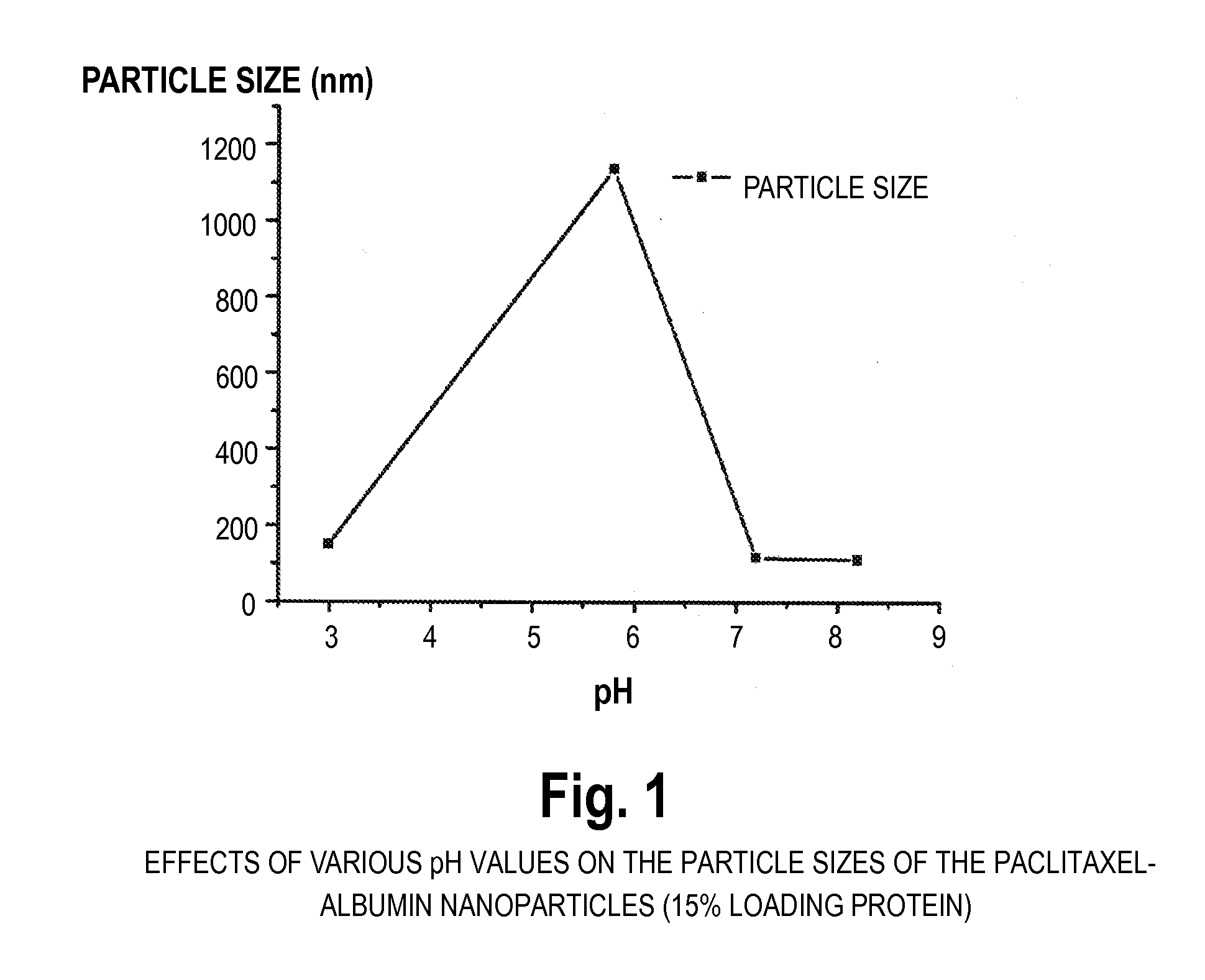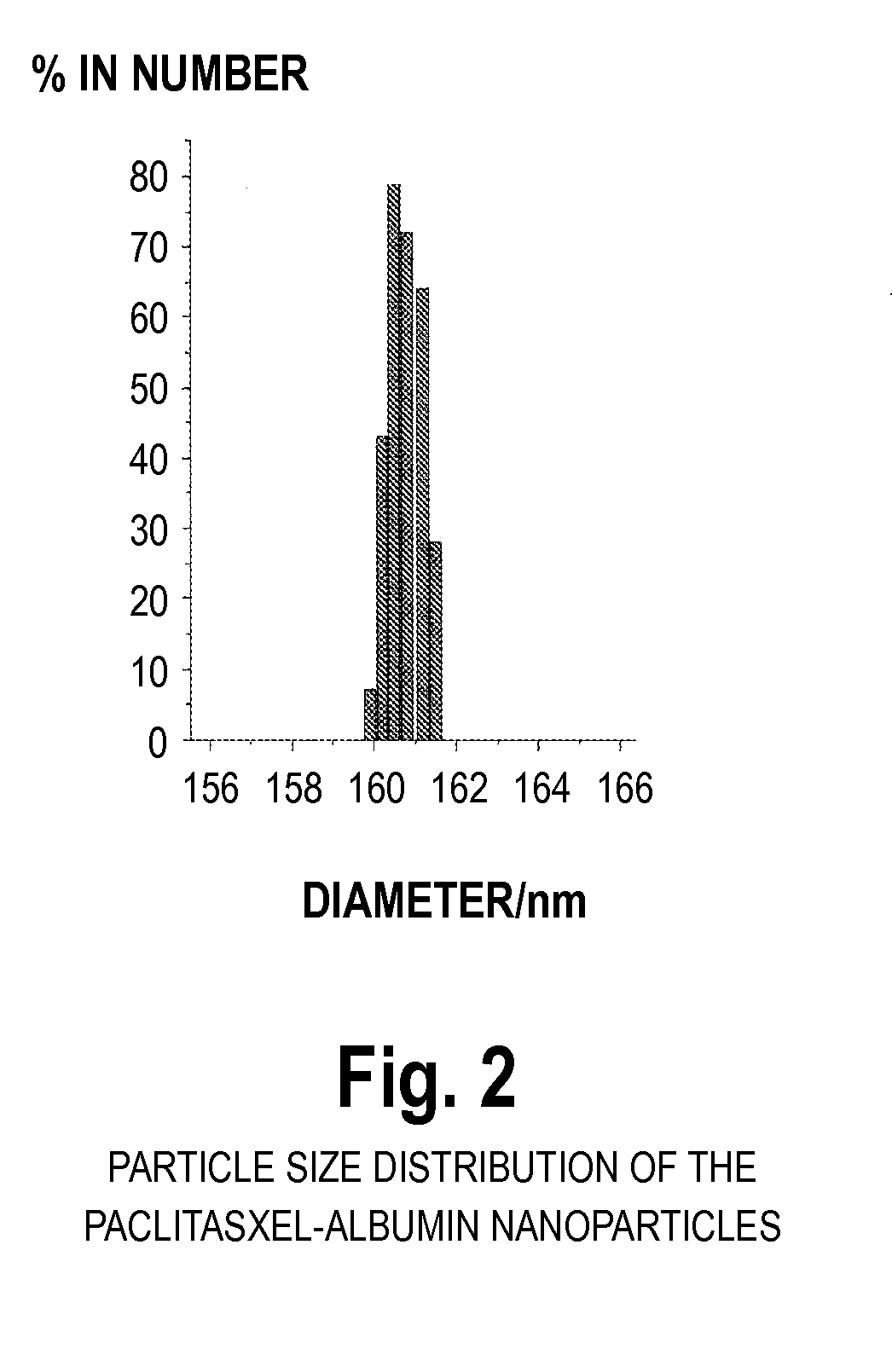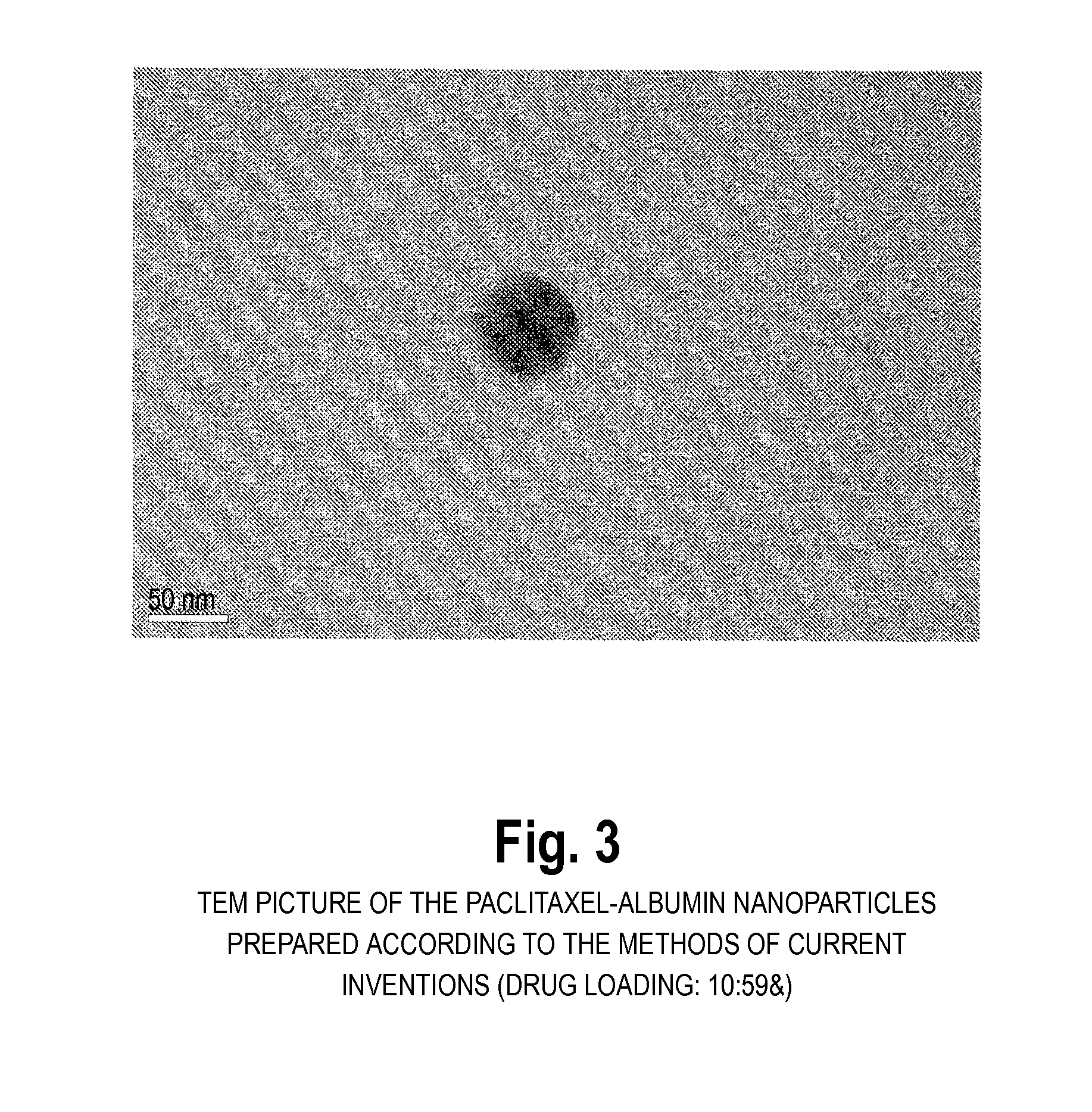Methods for drug delivery comprising unfolding and folding proteins and peptide nanoparticles
a technology of unfolding and folding proteins and nanoparticles, which is applied in the field of in vivo delivery of pharmacologically active agents, can solve the problems of high pressure and relatively high temperature required for obtaining nanoparticles and removing organic solvents, and the use of organic solvents is undesirable, and the drug loading capacity is limited
- Summary
- Abstract
- Description
- Claims
- Application Information
AI Technical Summary
Benefits of technology
Problems solved by technology
Method used
Image
Examples
example 1
Preparation of Paclitaxel-Albumin Nanoparticles
[0047]100 mg of albumin was dissolved in 10 ml 0.1M phosphate buffer pH 6.0 containing 0.5 mg / mL ethylenediaminetetraacetate and 0.05M mercaptoethanol. The reaction was carried out for two hours. At the end of reaction, the protein was precipitated and washed with 5% trichloroacetic acid. Next, 16 mg paclitaxel was dissolved in 1.6 mL ethanol and mixed with the precipitated protein. After 10 minutes mixing, 50 mL 0.1M phosphate buffer pH 8.0 was added to dissolve the mixture. The resulting dispersion is translucent, and the typical diameter of the resulting paclitaxel particles was 80 nm-200 nm (BIC 90plus particle size analyzer). HPLC analysis of the paclitaxel content revealed that more than 90% of the paclitaxel was encapsulated into the albumin.
example 2
Preparation of Paclitaxel-Albumin Nanoparticles without Protein Precipitation
[0048]100 mg of albumin was dissolved in 50 mL tris-buffer (pH 7.4) with stifling at 37° C. and 350 μL mercaptoethanol was added. The unfolding reaction was carried out for 10 minutes. Two mL of ethanol solution containing 20 mg paclitaxel was added. After 30 minutes, the sample was dialyzed in tris-buffer (pH 7.4) for 24 h. The dispersion was further lyophilized for 48 hours. The resulting cake could be easily reconstituted to the original dispersion by addition of sterile water or saline. The particle size after reconstitution was the same as before lyophillization. The typical diameter of the resulting paclitaxel particles was 80 nm-200 nm (BIC 90plus particle size analyzer). HPLC analysis of the paclitaxel content revealed that more than 90% of the paclitaxel was encapsulated into the nanoparticles.
example 3
Preparation of Paclitaxel-Albumin Nanoparticles
[0049]100 mg human albumin was dissolved in 10 ml buffer, pH 4.8, and kept in an ice bath for 30 minutes. 7.5 mL cold acetone (0° C.) was added (to induce precipitation) and kept in the ice bath for an additional 60 minutes. The solution was then centrifuged and precipitates were collected. A 10 mg / ml acetone solution of paclitaxel was added and mixed with the precipitates by applying sonication. A physiological buffer was added and mixed using a magnetic stirrer to form a solution. The mean particle size of the paclitaxel-albumin nanoparticles thus obtained was analyzed using BIC 90plus particle size analyzer, and found to be 150-220 nm. The nanoparticle solution was then dried by lyophillization. The freeze-dried cake was reconstituted. The paclitaxel loading of the nanoparticles was 8.3% using a HPLC assay.
[0050]Additional experiments showed that glycine, mannitol, trehalose or lactose can be used as a bulking agent for lyophillizati...
PUM
| Property | Measurement | Unit |
|---|---|---|
| Temperature | aaaaa | aaaaa |
| Temperature | aaaaa | aaaaa |
| Temperature | aaaaa | aaaaa |
Abstract
Description
Claims
Application Information
 Login to View More
Login to View More - R&D
- Intellectual Property
- Life Sciences
- Materials
- Tech Scout
- Unparalleled Data Quality
- Higher Quality Content
- 60% Fewer Hallucinations
Browse by: Latest US Patents, China's latest patents, Technical Efficacy Thesaurus, Application Domain, Technology Topic, Popular Technical Reports.
© 2025 PatSnap. All rights reserved.Legal|Privacy policy|Modern Slavery Act Transparency Statement|Sitemap|About US| Contact US: help@patsnap.com



